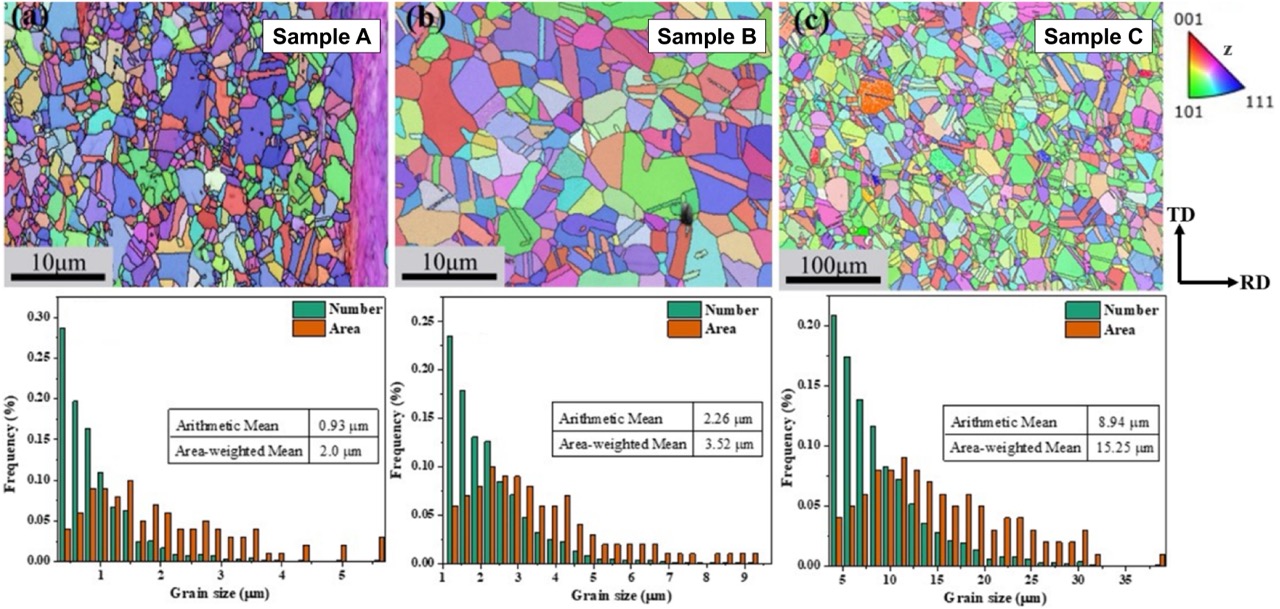What is the discovery?
Austenitic stainless steels combine high strength and toughness, making them useful for automotive applications. These steels can undergo a crystallographic phase transformation from austenite to martensite, triggered either through cooling below the martensitic start temperature or by mechanical deformation. This martensitic transformation (MT) impacts the material’s mechanical performance. The tendency to undergo MT is known to be influenced by the parent austenite grain size (PAGS), but the details of this correlation are not fully understood. Here, researchers from the KTH Royal Institute of Technology and Luleå University of Technology in Sweden used high-energy x-ray diffraction at CHESS’ Forming and Shaping Technology (FAST) beamline to investigate the influence of PAGS on MT in Fe-18Cr-12Ni. These measurements showed that smaller PAGS suppresses MT in samples flash-cooled to cryogenic temperatures, but promotes MT during room-temperature mechanical deformation. Based on this, the team was able to draw conclusions about the impact of PAGS on martensite nucleation vs growth rate.


Why is this important?
Material microstructure is known to influence mechanical properties and behavior, but the details of these structure/property/performance relationships can be challenging to elucidate. This study provides new insight into the impact of grain size – a parameter that can be tuned during material processing – on phase transformation pathways in austenitic steels, paving the way for improved control over the performance of this industrially-important material.
Why did this research need CHEXS?
The high-intensity, high-energy x-rays available at CHEXS beamlines are a uniquely powerful tool for probing material microstructure and micromechanical response in situ during mechanical deformation. In particular, this study relied on a combination of capabilities available specifically at the FAST beamline: 1) high-intensity, >50 keV x-rays capable of penetrating through the millimeter-scale, high-Z samples, 2) large-area detectors capable of capturing information over a large swath of reciprocal space, to facilitate efficient detection of different crystallographic phases 3) the RAMS2 mechanical load frame, which enabled in situ mechanical testing.
How was the work funded?
The Center for High Energy X-ray Sciences (CHEXS), The U.S. National Science Foundation, NSF MPS/BIO/ENG (DMR-1829070) Swedish Research Council (BR), grant number 2022-04900 Competence Centre Neutron and X-ray science for industrial Technology transitions (NEXT), Vinnova, grant number 2023-00553
Reference
On the contrasting effects of parent austenite grain size on athermal and deformation-induced martensitic transformation in an Fe-18Cr-12Ni (wt. %) alloy
C Cai, G Spartacus, A Das, KS Shanks, W Mu, P Hedström
Materialia (2025); https://doi.org/10.1016/j.mtla.2025.102602
